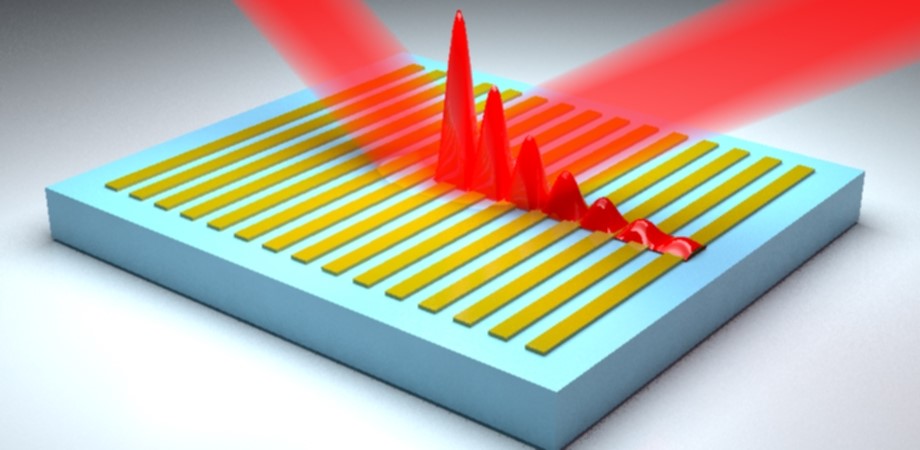High-Q Resonant States in Hybrid-Dielectric Phonon Systems

The nanoresonator is an important building block of modern photonics and optics. It traps light into a tiny region much smaller than the light's wavelength. There are two key performance indicators for a nanoresonator: mode volume, which measures how much light is squeezed, and quality factor (Q-factor), which indicates how efficiently light is trapped inside the resonators. Any absorption or escape of the light from the resonator will hamper its Q-factor. The design and fabrication of a small modal volume high-Q nanoresonator in the infrared regime is of great importance for a vast range of applications, from biosensing and chemical detection, to metamaterials and metalenses.
There are normally three types of nanoresonators in the midinfrared: dielectric, plasmonic, and phononic. Dielectric and plasmonic materials suffer from either lack of confinement or low Q-factors. Phononic materials, which exhibit strong collective lattice vibration modes in the midinfrared and usually have material absorption at least one order smaller than the plasmonic counterpart, are promising materials for realizing highly confined high-Q resonance.
Current technology to excite the phonon resonance carves isolated resonators from high-quality bulk phononic materials by reactive ion etching. The etching process inevitably causes damage to the crystal lattice and adsorption of foreign ions, both of which change the local material properties unpredictably and hamper the use of phononic materials for building compact low-loss nanoresonators.

Coupling of the propagating SPhP mode with the hybrid phononic-dielectric dipolar mode in germanium gratings with varying period P and fixed width (w=2 μm): (a) experimental normalized absorption and (b) simulated normalized absorption. The yellow, magenta, and green dashed lines indicate phase-matching conditions of SPhP modes with m=−1, 1, and −2, respectively. (c) Absorption of the grating when w=2 μm and P=8 μm. Shaded areas represent multi-Lorentzian decomposition of the spectrum. Purple dots and blue lines represent experimental data and the fitted spectrum, respectively. (d)-(f) Real parts of the Ez for the green, magenta, and red dots shown in (b), respectively. The scale bar represents 2 μm.
Researchers from Nanyang Technological University, Singapore, and Agency for Science, Technology and Research (A*STAR) recently developed an alternative way to efficiently excite the phonon modes without causing any damage to the phononic material, silicon carbide (SiC). In their studies, midinfrared nanoresonators are formed by creating an array of nanoribbons on top of bulk SiC using a thin layer of lossless dielectric material, germanium. Each individual germanium ribbon acts as a localized surface phonon resonator that confines light in all three dimensions. The Q-factor achieved is 96 and 195 for the fundamental dipolar mode and higher order mode-higher than previously reported values for SiC or plasmonic nanoresonators, and comparable to the lossless dielectric resonators in the midinfrared.
Aside from localized phonon polariton resonance, their design allows simultaneous excitation of the propagating phonon polariton resonance, which is a travelling wave along the SiC-air interface when the period of the germanium grating satisfies the phase-matching condition of propagating SPhP. The authors investigated the interplay and coupling between these two modes and discovered that the resonant frequency and the optical near-field distribution could be tuned by adjusting the period of the grating and the width of each germanium ribbon.
This work provides an interesting new scheme to harness the extraordinary properties of phononic materials for high-Q highly confined nanoresonators. The results of this research suggest that the hybridization of different material systems remains a fertile ground to be explored with great promise for addressing current technological challenges.
Read the original research article in the open-access journal Advanced Photonics. Bo Qiang et al., "High Q-factor controllable phononic modes in hybrid phononic-dielectric structures," Adv. Photon. 1(2), 026001 (2019).
| Enjoy this article? Subscribe to SPIE Journal Newsletters |
|



